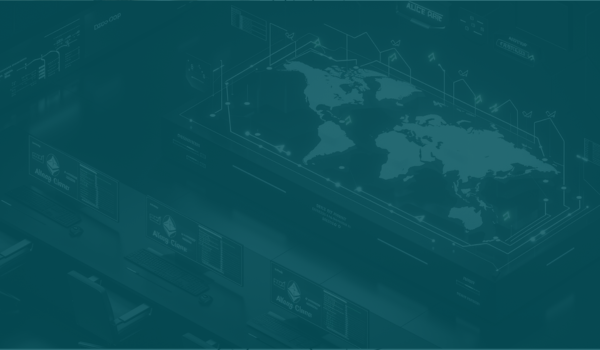When taking a SaaS product global, every organization faces a large set of challenges they must overcome in order to deliver a high-quality product around the world. In our past blogs of this six-part series, we’ve covered ensuring compliance, developing in a scalable manner and maintaining a level of high security.
Today, you’ll learn about delivering optimal performance no matter where your customers may be.
Challenges that SaaS companies may face on their path to a global market
As the demand for your product rises around the world, so do the product’s performance requirements. There are a variety of forms in which these challenges may appear, but all stem from having to support a wider variety of users in a large range of locales. Luckily, these issues are all fixable, however understanding what they are — and knowing where and when they may occur — could give your organization a leg up in proactively addressing them.
Some of the performance-related issues companies face include:
Higher latency for users
For many SaaS products, their network and infrastructure are based close to the home office of the company providing it. While this makes sense for a more regional product, when scaled up, it can cause latency issues for global clients unless the infrastructure is scaled with the growth of the product around the world. High latency can create many issues for your product’s long-term viability. If it’s frustrating to use, your support queues will be full of frustrated customers. In the worst case, your clients may give up on the product entirely. There are a few ways to solve this problem, one being expanding to regions closer to your target geographics.
Another option that your organization can take is to invest in a content delivery network (CDN). CDNs are extremely helpful for many SaaS companies, as they allow them to deliver their product without necessarily having to build the infrastructure themselves. According to AWS, using a CDN can provide you with a wide array of benefits for your performance, including:
- Faster load times
- Reduced bandwidth costs
- Increased availability and redundancy
- Improved security
Another way to increase performance for your network and reduce global latency is to consider investing in edge networking. This brings your architecture as close to the point of request as it possibly can be to help reduce bandwidth as well as latency. By moving a large portion of your computation closer to points of request, you can reduce the overall load that your applications are under, speeding up performance.
For the best possible performance of your network around the globe, your organization should first understand the general profile of who its users are and the interactions they are likely to have with their applications. From there, you can easily determine a network strategy that will help to boost performance and reduce latency for them.
Cross-tenant interference
Cross-tenant interference is often overlooked by SaaS companies when expanding or going global. When many tenants are simultaneously accessing your system and sharing resources one tenant’s poor performance can negatively impact another tenant. This isn’t only related to poor performance on your tenant’s end, however. To provide an example, if your organization has a poorly optimized database query and a user is running a report that executes it, that report could have adverse effects on the performance of another user performing normal transactions.
To reduce the issues this might cause, it is imperative that your organization builds its architecture while bearing the possibility of cross-tenant interference in mind. One of the key ways you can do this is to create segmentations of your environments so the impact of a poorly performing tenant on others is minimized.
Strict data consistency models
If you’re deploying your application across multiple regions and need to ensure data in one region is replicated in another, your product will very likely run into performance issues. By being locked into the model of strict data replication, you reduce some of the freedom in the development of the product, and the level of data that you need to keep track of can become overwhelming.
To fix this issue, your company should find an architecture that allows you to relax your consistency models and store data for individual regions separately. While this won’t work for all companies or all SaaS products, data consistency and performance have an inverse relationship with each other — meaning organizations should have a solid understanding of when data replication is needed, and when it can be ignored. These models become far more evident to companies running a truly multi-region strategy compared to single-region strategies and should be accounted for early.
When it comes to performance relating to data consistency, there are SaaS infrastructures that work better than others. When optimizing your architecture to ensure performance, consider these two architecture patterns:
- Multiple Accounts, Isolated Regions: By separating your architecture by region and account, you can easily comply with each region's data requirements. That said, data will be more difficult to transfer. Use this architecture if you don’t need to move data between regions or duplicate data across regions often.
- Account per Environment, Regional Replication: This architecture provides full regional failover support and grants global access to data for your users. However, it replicates data across all regions as part and parcel of its nature, heightening the potential for your performance to be impacted.
Ensuring optimal performance around the globe
Delivering high performance to a global customer base can be a daunting task for any SaaS product. Overcoming the myriad of challenges that come with optimizing performance across the globe requires a keen awareness of the obstacles that must be overcome.
Fortunately, Amazon Web Services (AWS) offers a comprehensive solution that can help your organization achieve global success. Their vast global network of regions and edge locations provides the ideal platform for businesses seeking to deliver their SaaS product worldwide. With their robust cloud services and architecture, you can rest assured that your product will perform exceptionally well no matter where it's being accessed.
But when it comes to creating your infrastructure, it’s helpful to work with a partner who understands how to develop a global product. At base2Services, we’ve assisted organizations like yours to launch their SaaS products with our deep expertise in AWS, SaaS and our groundbreaking DevOps approach.
Now that you understand the challenges of taking your SaaS product global, I will introduce you to 5 key AWS architectural patterns in our next post, Globalize your SaaS product with 5 AWS architectural patterns. In this post, I’ll explain what each of the patterns entails, when to use them and most importantly, their pros and cons in relation to addressing the 4 challenges we discussed here.
For more information on how your SaaS business can be successful internationally, please read our other insightful blog posts in this six-part series:
- 4 Key Challenges of Taking Your SaaS Product Global – Part 1: Compliance
- 4 Key Challenges of taking your SaaS product global – Part 2: Security
- 4 Key Challenges of taking your SaaS product global – Part 3: Scaling
- Globalize your SaaS product with 5 AWS architectural patterns - NEXT
- Utilizing AWS Organizations for your multi-account SaaS architecture
And, if you haven't already, be sure to watch the videos of our webinar on this topic where we go in-depth on each challenge and provide you with best practices, solutions and recommendations.
Ready to take your SaaS product to the next level? Contact base2Services today to learn more about how we can help you succeed on a global scale.





